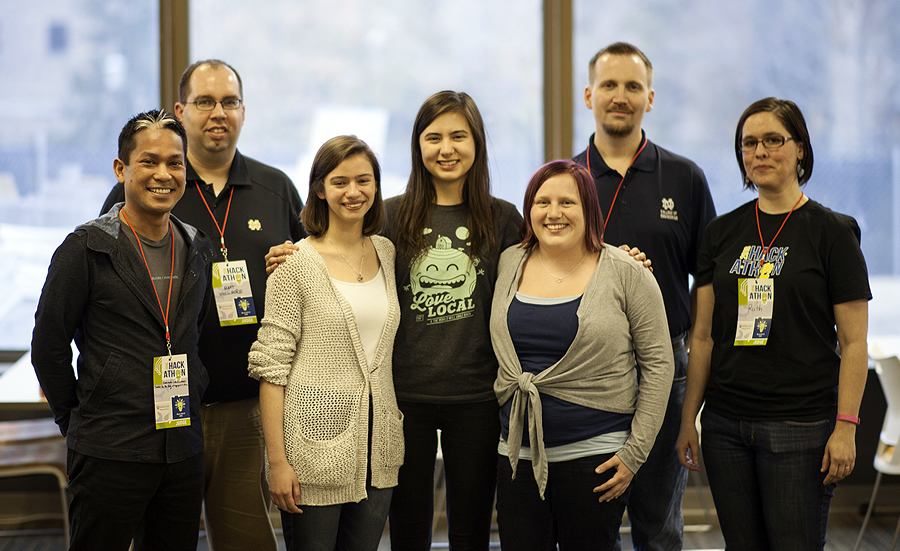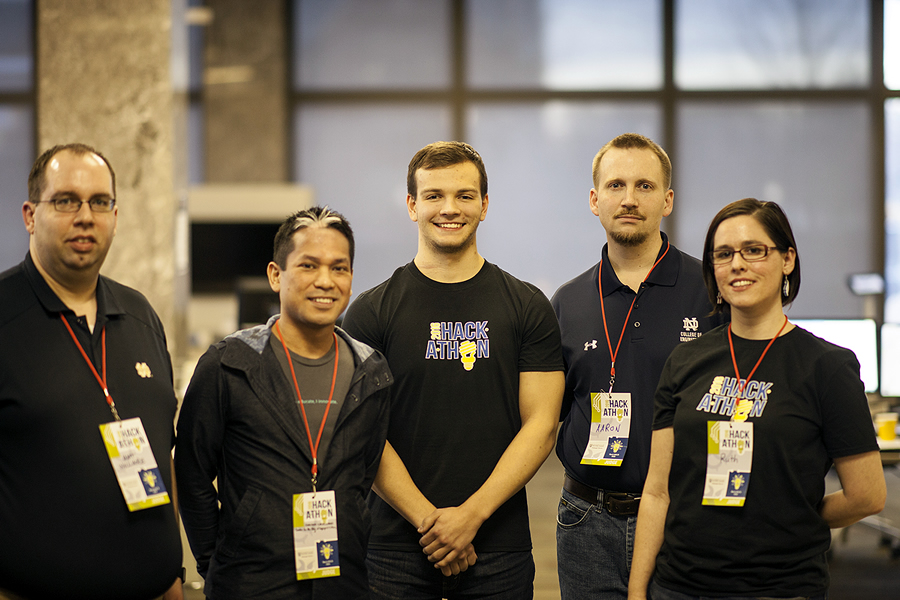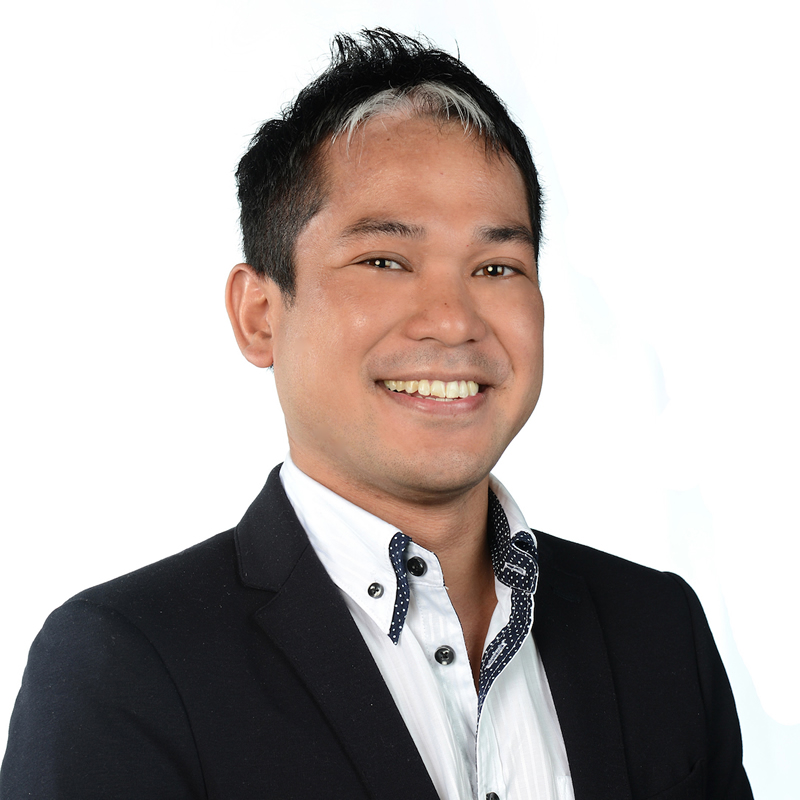2016 Winners
First Place

Theseus
A more detailed mapping utility to guide you to a specific shelf
Katherine Barlock, Computer Science, College of Engineering
Katricia Herring, Computer Science, College of Engineering
Ann Keenan, Computer Science, College of Engineering
Runner Up and Competitor’s Choice

TeachItForward
A service teaming students with tutors & resources
Conrad Bailey, Computer Science, College of Engineering
Madeline Kuster, Computer Science, College of Engineering
2016 Judges

Ruth Tillman
Digital Collections Librarian
Hesburgh Libraries
Newly-arrived at Notre Dame, Ruth works with digitization and technical teams to bring Notre Dame collections online and make them more accessible to the community. She translates user needs into technical specifications and recommendations for the library’s digital collections development teams. Ruth also liaises outside the University, exploring avenues to get Notre Dame content into state and national digital collections such as HathiTrust, Indiana Memory, and DPLA. In the spirit of hackathons, Ruth often writes Python or PHP scripts to turn rote tasks into batch processes.

Matt Willmore
mobileND Program Manager,
Office of Information Technologies
Matt is currently mobileND Program Manager at Notre Dame, where he works to advance the state of mobile technologies on campus. In addition to providing leadership and strategy for the ND Mobile app, Matt also works with faculty, students and campus departments to best understand how mobile technologies can improve research, learning, teaching and administration, and executes projects to realize those possibilities. Matt also focuses on opportunities for students to actively participate in the creation and development of both technical and non-technical mobile projects, many of which are used on campus today.

Aaron Striegel
Associate Chair, Associate Professor
Department of Computer Science and Engineering
Aaron is currently the Associate Chair and is an Associate Professor in the Department of Computer Science and Engineering at Notre Dame. In addition, he also serves on the Executive Committee of the Wireless Institute and is a member of the steering committee for the NDXG app tied to Campus Crossroads. Aaron’s research focuses on instrumentation and performance improvements for wireless in crowded venues, specifically with an eye towards the interplay of cellular, WiFi, and social networks. His further research interests include computer security, network visualization, and network scaling.

Joachim Castellano
Educational Technologist
The Center for the Study of Languages and Cultures
Joachim Castellano is an educational technologist at Notre Dame's Center for the Study of Languages and Cultures (CSLC). He is a specialist in Computer Assisted Language Learning (CALL) and digital media. Joachim's present focus is to innovate language learning through the CSLC's various initiatives, such as faculty training and student-led peer tutoring. Since 2009 Joachim has taught at Japanese universities and publishes and presents in journals and conferences worldwide. In 2013, Joachim's work in technology and education was recognized when he was selected for the Apple Distinguished Educator award.
This guide lists the categories for judging the projects that will be presented at the conclusion of the hackathon. Each category has a weighted percentage that will be used to calculate the final score for each team. This explanatory material should be used as a guide for scoring each area.
Impact 20%
The solution should have a significant impact on either library operations or the services that students and faculty use on a regular basis. An indication of impact would be represented in factors such as ease of use for a particular library service, increasing accessibility, increasing availability, fostering communication, etc. The product should advance the library’s ultimate goal of “connecting people to knowledge”.
Teamwork 20%
This category emphasizes the way in which the team members cooperate in order to create their product. The team should involve every member in the creative process and try to take advantage of individual strengths. This should be evident in the team presentation, and the participation of each team member should be clearly evident. Teams that incorporate a diverse set of skills and styles but who work in a unified manner have an advantage in this category.
Innovation 30%
Simply put, innovation represents a degree of “pushing the envelope” for access to services and content. The key criterion for the category is advancement of library services into areas that have not been previously explored. Another area of of focus is advancement using cutting edge methods for activities such as user interaction, data manipulation and presentation, and use of new information technology techniques.
Usability 15%
This category represents the ease of use for library patrons when they engage with the target content or service. The user interface should be intuitive and uncomplicated. The goals of the product should be clear. The information presented by the application or product should be clear, and the method for interaction with the content or service should be understandable by everyone.
Presentation 15%
The final presentation of the product to the judge should be professional, clear, and meaningful. Aspects that could add to the quality of the presentation could be creativity, engagement with the audience, style of the presentation, or simplicity. Does the presentation clearly communicate the intent of the product? Is the presentation well structured so that the judge and audience can understand the nature of the problem, the implementation of the solution, and a conclusion that states what the next steps are?
Hesburgh Libraries Hackathon Code of Conduct
Social Practices
In keeping with the codes of conduct set forth in du Lac: A Guide to Student Life, our Hackathon is dedicated to providing a harassment-free experience for everyone, regardless of gender, gender identity and expression, age, sexual orientation, disability, physical appearance, race, ethnicity, nationality, religion, previous hackathon attendance or computing experience. We do not tolerate harassment of hackathon participants in any form.
In order to foster a positive and professional learning environment we encourage the following kinds of behaviors:
- Use welcoming and inclusive language
- Be respectful of different viewpoints and experiences
- Gracefully accept constructive criticism
- Focus on what is best for all of us in the community
- Show courtesy and respect towards other community members
Photography
All participants understand that the Hesburgh Libraries Hackathon may be photographed, videotaped, and or recorded by the Hesburgh Libraries, and grant the Hesburgh Libraries the right to use or refrain from using their name and/or likeness without their approval or compensation. Photography by participants is encouraged, but other participants must be given a reasonable chance to opt-out from being photographed. If they object to the taking of their photograph, comply with their request. It is inappropriate to take photographs in contexts where people have a reasonable expectation of privacy.
Inappropriate Behavior
If you witness or experience any transgressions of this Code of Conduct at the Hackathon, please tell a member of the Hackathon staff immediately, or email hesburgh-library-hackathon-list@nd.edu.